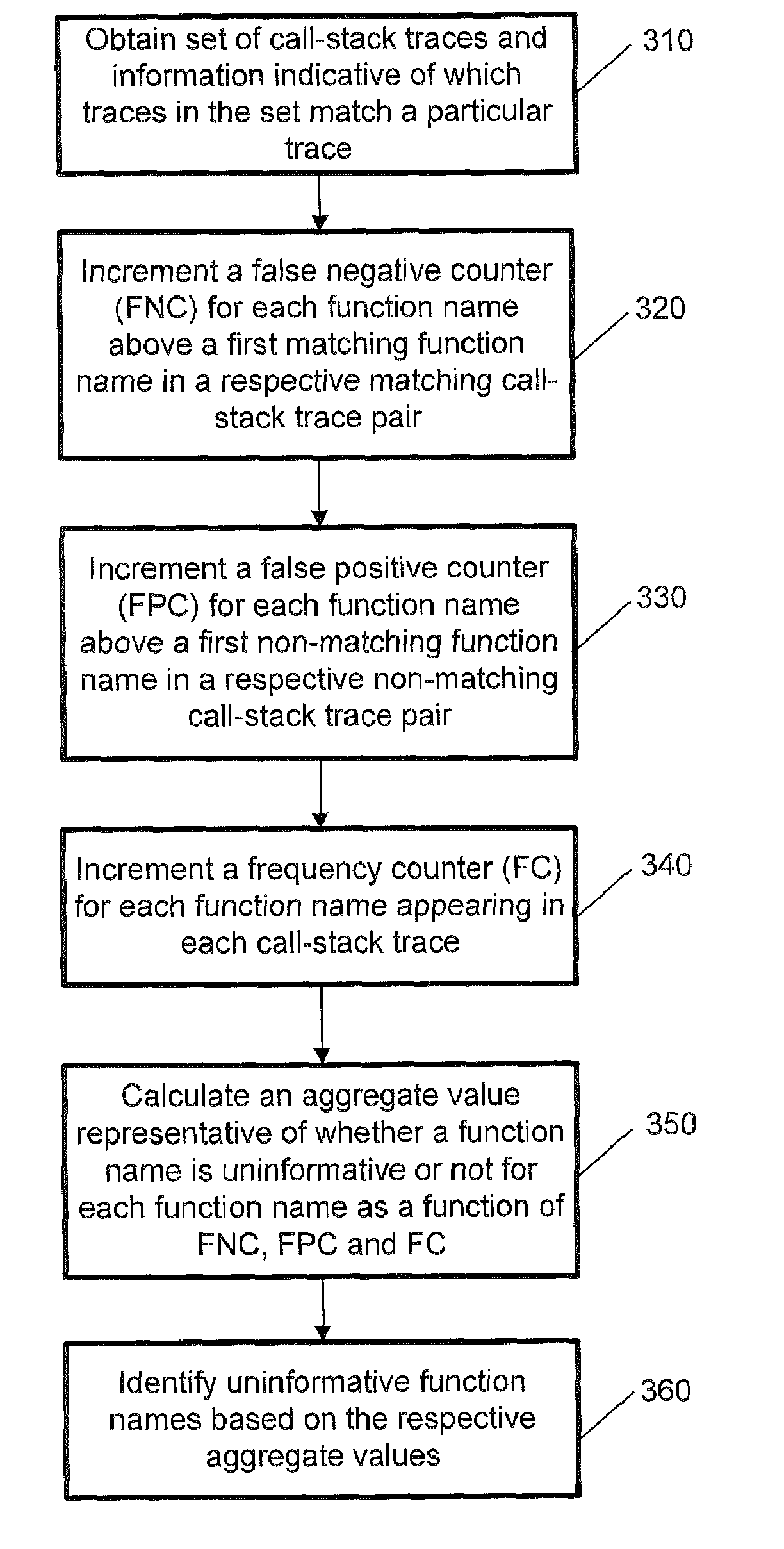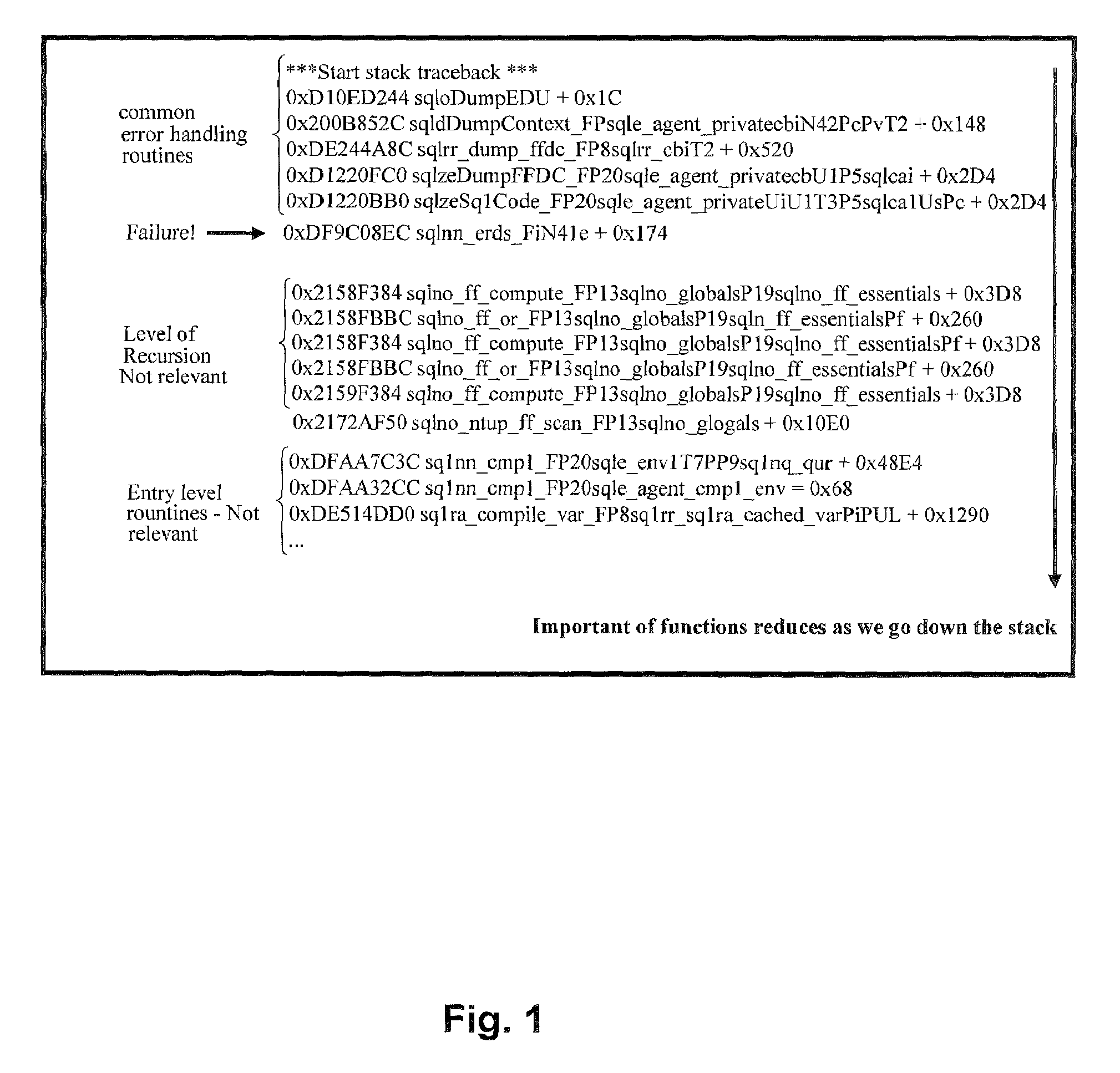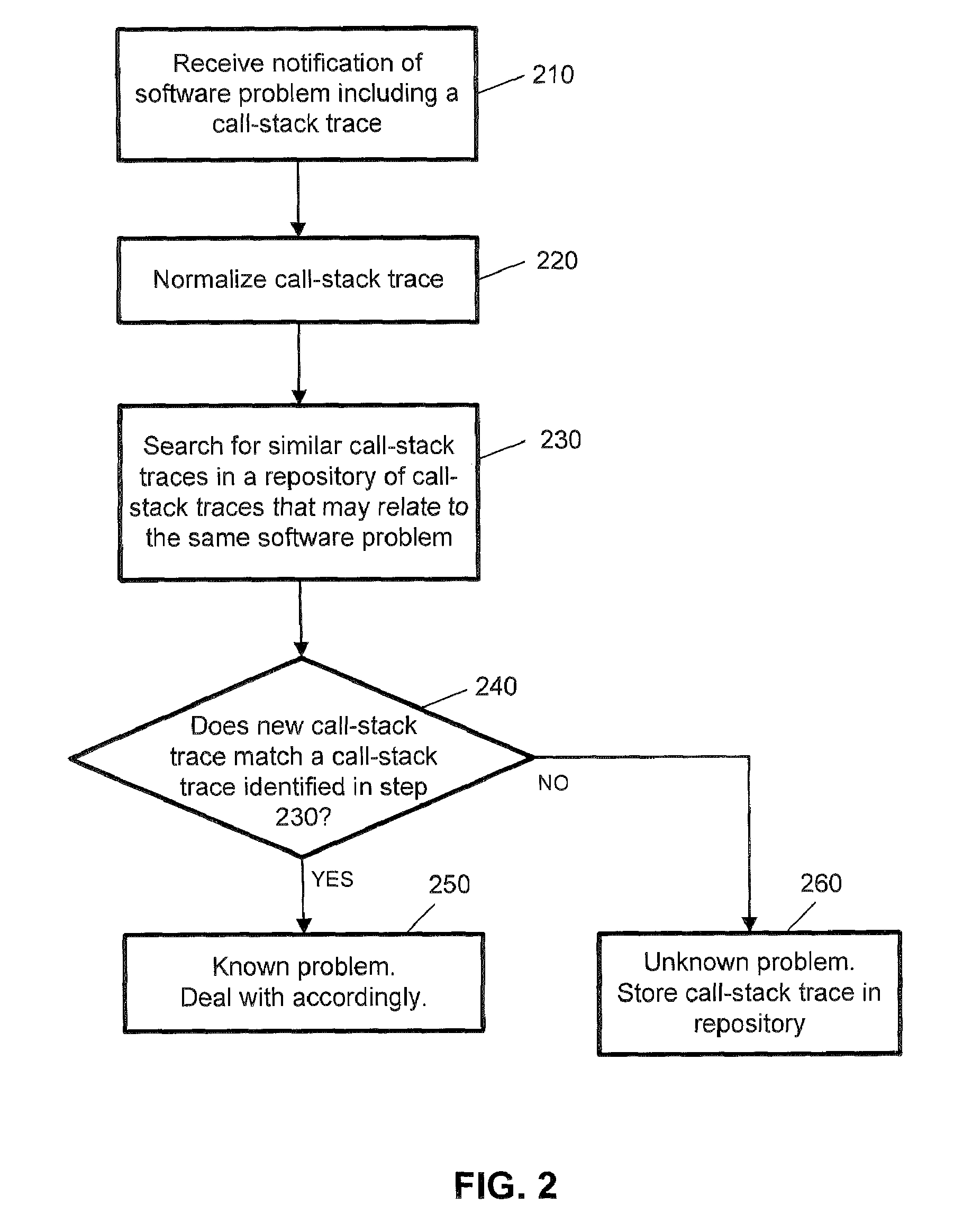Identification of uninformative function names in call-stack traces
a function name and function name technology, applied in the field of computer software maintenance, can solve the problems of time-consuming and labor-intensive to discover whether a reported problem is a known problem, and the difficulty of inferring relationships from natural language descriptions of problem reports
- Summary
- Abstract
- Description
- Claims
- Application Information
AI Technical Summary
Problems solved by technology
Method used
Image
Examples
Embodiment Construction
[0028]Embodiments of systems, methods, and computer program products are described hereinafter for identifying uninformative function names in call-stack traces. The embodiments described hereinafter have application in the field of computer software maintenance. Examples of such applications include, but are not limited to, help-desk scenarios and autonomic systems. The aim of autonomic systems is to remove the need for human intervention in system management. Desirable attributes of autonomic systems include self-healing and automatic identification of known problems. It is advantageous that false positives are minimized in such systems.
[0029]FIG. 1 shows an example of a C++ call-stack trace generated by IBM's DB2 relational database management system. Each line in the call-stack trace relates to a separate function and begins with a hexadecimal number denoting the particular function's address in memory. The address is followed by the function's name separated by two underscores ...
PUM
 Login to View More
Login to View More Abstract
Description
Claims
Application Information
 Login to View More
Login to View More - R&D
- Intellectual Property
- Life Sciences
- Materials
- Tech Scout
- Unparalleled Data Quality
- Higher Quality Content
- 60% Fewer Hallucinations
Browse by: Latest US Patents, China's latest patents, Technical Efficacy Thesaurus, Application Domain, Technology Topic, Popular Technical Reports.
© 2025 PatSnap. All rights reserved.Legal|Privacy policy|Modern Slavery Act Transparency Statement|Sitemap|About US| Contact US: help@patsnap.com



